What's New
Displaying results 571 - 580 of 4913

Resource | Publications,
The report aims to offer an overview of different contexts and issues relevant to the respect, protection and promotion of the human rights of LGBT people through a human rights-based analysis and, in so doing, it aims to support lawyers working to enhance protection for the human rights of LGBT persons within their challenging domestic legal frameworks.
The report provides support to the work of LGBT human rights defenders working on human rights issues, as well as assisting policymakers to better understand the impact of law and policy on the human rights of LGBT persons globally.

Resource | Publications,
A fascinating new volume Sexual Violence in Intimacy (eds. Torres & Yllö, 2021), including a chapter by kNOwVAWdata's Dr Henriette Jansen.
In her chapter, Dr Jansen looks at gender-based violence and marital rape in 11 Pacific Island countries, revealing unexpected and misunderstood patterns and drivers typically hidden behind regional, subregional and national averages.
Through an unprecedented analysis of violence against women prevalence data across the Pacific, Jansen illustrates how without qualitative insights and cross-cultural contextualisation, quantitative data alone never tell the full story.

Resource | Publications,
UNAIDS modelling shows that investing US$ 29 billion a year in the HIV response in low- and middle-income countries by 2025 will put the world back on track to end AIDS by 2030. The investment, paid for by both donors and the wealthier countries most impacted by the HIV pandemic, would result in annual new HIV infections falling dramatically, from 1.7 million in 2019 to 370 000 in 2025, and annual AIDS-related deaths falling from 690 000 in 2019 to 250 000 in 2025. The number of new HIV infections among children will drop from 150 000 in 2019 to less than 22 000 in 2025.

Resource | Publications,
Big data analysis shows that Internet searches related to violence against women and help-seeking rose significantly during COVID-19 lockdowns in eight Asian countries, buttressing evidence of the particular dangers faced by women confined to homes or restricted in their movements. In response, government and private service providers should boost their online reach and engagement with survivors of violence.

Resource | Publications,
A situational assessment is an important step in national adaptation of a global strategy. Ideally, it is conducted as part of the planning cycle in implementation of the strategy and updated every few years. The checklist presented here is designed to support countries in planning their analyses according to their own contexts. While it sets out the key principles and recommendations to frame the situational assessment, it deliberately avoids being overly prescriptive, giving countries the space and flexibility to determine what is missing, what should be strengthened and the most feasible approaches to addressing pressing challenges. It consists of four topics aligned with the four objectives of the strategy to strengthen thematic analyses.
This tool is not designed for identifying or prioritizing research gaps but rather for improving policy and strategic decisions to enhance TB research on the four thematic areas (objectives) of the global strategy. For those interested in developing a research agenda, WHO has published a toolkit that provides guidance and allows sharing of best practices.
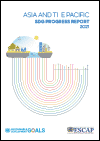
Resource | Publications,
This report analyses progress towards the Sustainable Development Goals (SDGs) in Asia and the Pacific and its five subregions as well as the availability of data. It assesses gaps which must be closed to achieve the goals by 2030. This assessment is designed to ensure the region’s actions remain on target and shortcomings are addressed as they arise. It is a resource for all stakeholders involved in prioritization, planning, implementation and follow-up of the 2030 Agenda for Sustainable Development in Asia and the Pacific.
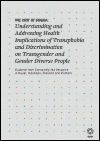
Resource | Publications,
There are a range of negative experiences trans and gender diverse people encounter when trying to access healthcare in a cis-normative society. These negative experiences, both systemic and interpersonal, produce unique stressors that can lead directly to negative health outcomes including poor physical or mental health. They can also be a barrier to utilising healthcare when a previous experience of discrimination leads to future avoidance of accessing services. It is vital to understand the nature, extent and impact of stressors on trans and gender diverse people’s use of healthcare services. Only then, interventions can be implemented to mitigate stressors and improve healthcare access and utilization.
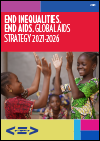
Resource | Publications,
End Inequalities. End AIDS. Global AIDS Strategy 2021-2026 is a bold new approach to use an inequalities lens to close the gaps that are preventing progress towards ending AIDS. The Global AIDS Strategy aims to reduce these inequalities that drive the AIDS epidemic and prioritize people who are not yet accessing life-saving HIV services. The Strategy sets out evidence-based priority actions and bold targets to get every country and every community on-track to end AIDS as a public health threat by 2030.
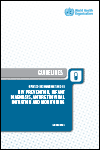
Resource | Guidelines,
These guidelines provide new and updated recommendations on the use of point-of-care testing in children under 18 months of age and point-of-care tests to monitor treatment in people living with HIV; the treatment monitoring algorithm; and timing of antiretroviral therapy (ART) among people living with HIV who are being treated for tuberculosis.
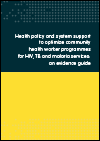
Resource | Publications,
The past two decades have seen unprecedented progress in fighting HIV, TB and malaria, although a further acceleration is required to achieve national and global goals. Progress has been uneven across regions, population groups and interventions. Achieving the ambitious goals of the Sustainable Development Agenda requires leveraging lessons learned and scientific progress, including efforts to scale up cost-effective approaches that reach key populations through wider primary health care (PHC) and health systems strengthening strategies, and ensuring adequate levels of domestic funding, complemented, where required, by development partner support.





